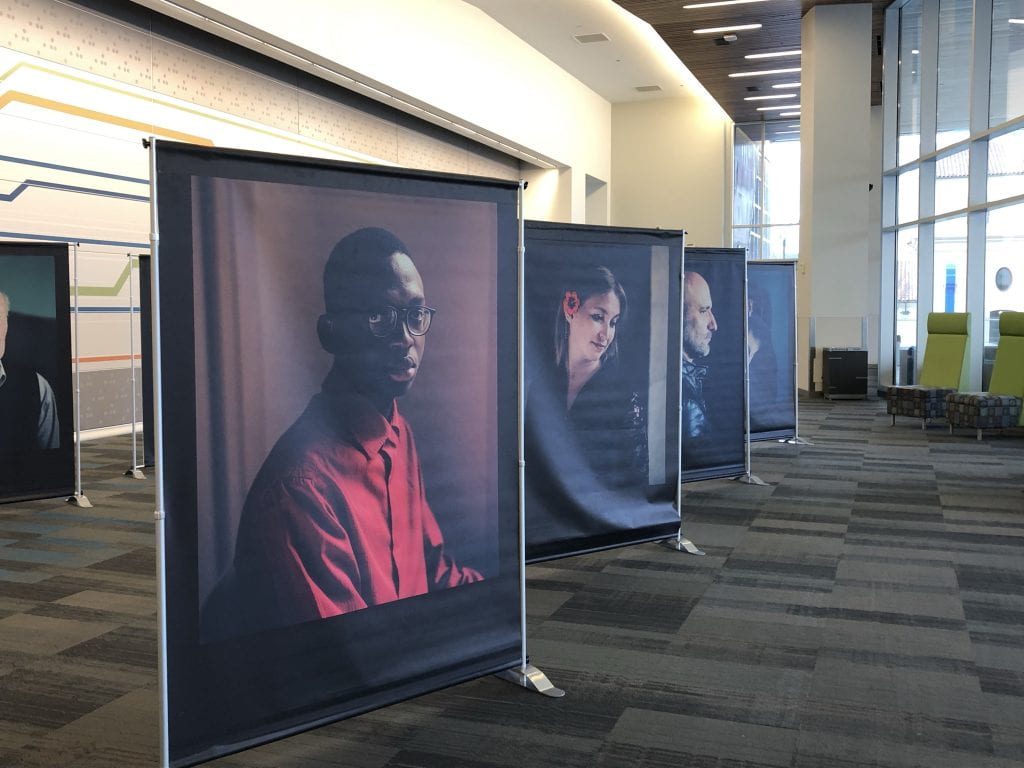Our Research Updates in Archways give a snapshot of the Rice ARCHES Initiative’s current work, research progress, and future directions.
Art & Science at the ARO Conference
This month, Melia Bonomo from the Department of Physics & Astronomy tells us about some unique art exhibits at the Association for Research in Otolaryngology conference.
Recently, I had the opportunity to attend the Association for Research in Otolaryngology (ARO)’s 2020 midwinter meeting in San Jose, California with the Raphael Lab. It was a really great opportunity to learn about current research in auditory neuroscience, especially for work relevant to Project CHROMA that is looking at how the ear and brain perceive and process music. An important aspect of doing scientific research is interacting with other scientists to share your results, discuss progress, learn about other work going on in your field, spark new ideas and research directions, and initiate new collaborations — communication really is key to scientific advancements.
In addition to research presentations and posters, there were several neat exhibits at ARO that combined the arts and sciences!
(1) Outside the San Jose McEnery Convention Center, there was a large-scale interactive sculpture (pictured above) called Idea Tree by artist Soo-in Yang, fabricated and installed by Demiurge, and engineered by ARUP. Demiurge give a great description of the connection between art and technology: “The sculpture accepts audio inputs – speech, song, ambient noise – and by interacting with and learning from participants using advanced AI and speech recognition software, these sounds are used to create a dynamic audio composition. Idea Tree is the embodiment of the idea that a convention center is a place where people gather to share ideas and concepts, forming the seeds for these ideas to grow and evolve.”
(2) Inside the Convention Center’s prefunction area, there was a multisensory art exhibit called “Your Eyes On My Ears,” in which visitors listened to accompanying audio while contemplating portraits of individuals wearing hearing aids or cochlear implants. This exhibit was put together by the Droit Pluriel and Foundation Pour l’Audition to provide a unique perspective on hearing loss.

(3) One night of the conference there was a public outreach event at the San Jose Montgomery Theater, “Musae on the Brain: Women in Voice and Science,” which featured a performance by a local women’s vocal ensemble Musae followed by presentations by Sarah Schneider, a speech-language pathologist from UCSF who specializes in understanding and caring for the professional voice, and Dana Boebinger, an auditory neuroscientist from Harvard who studies how humans perceive complex sounds. There was a q&a period afterwards for discussion on how music arises from a combination of human voices, ears, and brains.
Also at ARO, I met Dr. Charles Limb and Dr. Karen Barrett of the The Sound and Music Perception Lab (University of California, San Francisco) who have a National Endowment for the Arts-funded Research Lab like us! Limb and Barrett are studying the cognitive and social processes of arts-based creativity, and how these processes affect learning-related outcomes. Check out their website for more information about their work: https://ohns.ucsf.edu/limb-lab.
Overall, the conference and the associated art exhibits made for a great experience — a big thank you to the Raphael group for supporting me to attend!

 Houston, TX – Can music therapy slow the progression of degenerative brain disorders such as Alzheimer’s disease and dementia while promoting well-being? A grant from the National Endowment for the Arts (NEA) will fund a new lab at Rice University that will explore this possible new inroad in the fight against such disorders.
Houston, TX – Can music therapy slow the progression of degenerative brain disorders such as Alzheimer’s disease and dementia while promoting well-being? A grant from the National Endowment for the Arts (NEA) will fund a new lab at Rice University that will explore this possible new inroad in the fight against such disorders.